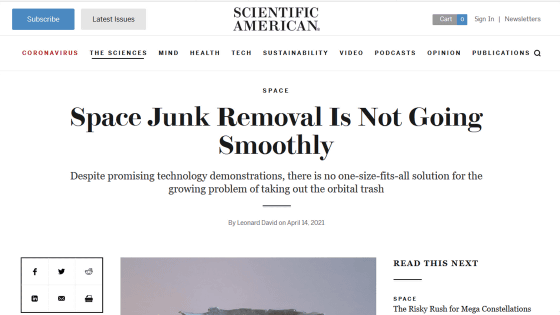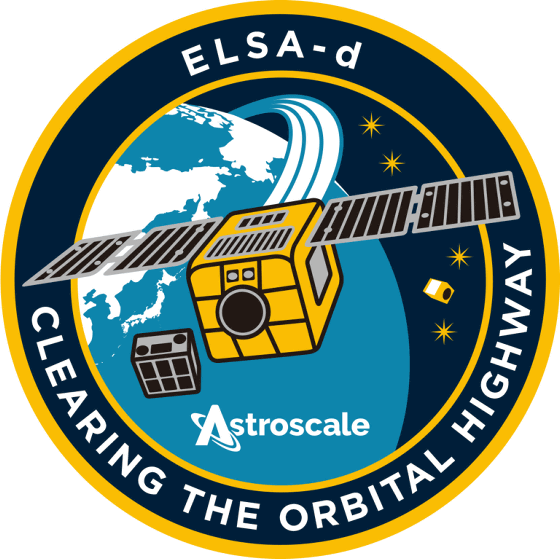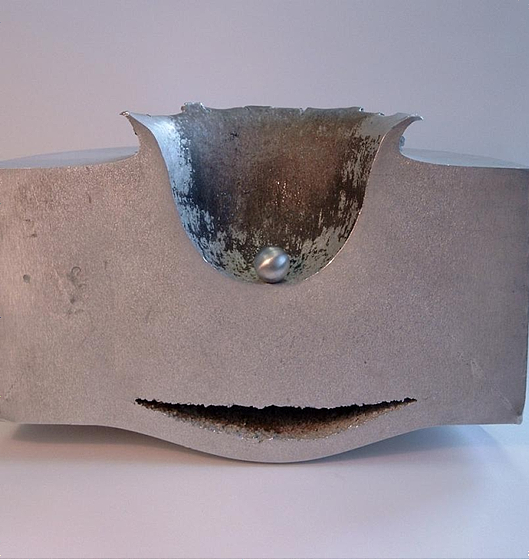Is there a way to collect 'space debris' floating in outer space?

Around the earth, there are
Space Junk Removal Is Not Going Smoothly --Scientific American
https://www.scientificamerican.com/article/space-junk-removal-is-not-going-smoothly/

For decades since space exploration began, countless space debris have been released into outer space, including used rocket fuel tanks, inactive artificial satellites, broken artificial satellites, and fragments of artificial satellites scattered by accidents. I did. In addition, space developer SpaceX 's satellite Internet service, Starlink , plans to launch 12,000 artificial satellites, as well as thousands of other artificial satellites for corporate satellite Internet services such as Amazon and OneWeb. Due to the planned launch, Scientific American points out that there is an increased risk of space debris colliding with satellites.
In the 1970s, Donald Kessler, who was conducting research on space debris at NASA, released a simulation model called 'Kessler Syndrome ' that briefly explained the 'risk of collision between space debris and artificial satellites' to the world. Began to insist on the danger of space debris. Since then, various space debris collection methods such as nets, laser cannons, and robot arms have been studied to minimize this risk.
Russia is trying to dispose of space debris with a laser cannon-GIGAZINE

◆ Development of space debris removal satellite
As one of the space debris removal method of practical use is expected, companies 'to expand the space debris removal service based in Tokyo
Astroscale launched the artificial satellite 'ELSA-d' on March 22, 2021 to demonstrate ELSA's technology. ElSA-d has been launched with a 'capture satellite' and a 'debris simulation satellite' combined, and by repeatedly separating and capturing the debris simulation satellite using magnetic force in outer space, the ability to collect space debris can be improved. I'm trying to prove it.

'ELSA-d and similar satellites are positive developments for removing space debris,' said Scientific American, while expecting successful experiments. 'Space debris continues to spread. Space debris recovery.' Satellite development alone is not enough to solve the problem. '
◆ Suppress the generation of space debris
Space debris has objects of various sizes, from large rocket debris to small debris, according to TS Kelso, a scientist at
Alice Gorman, who studies space debris at Flinders University , said, 'There are space debris of various sizes, from nanoparticles to huge objects like double-decker buses. They come in a wide variety of shapes, such as lumps of metal and thin objects such as paper, 'he insists on the variety of space debris and the complexity of recovery.
'The most risky space debris are small pieces 1-10 cm square,' Gorman said. Artificial satellites modify their orbits to avoid collisions with space debris, but small debris makes it difficult to predict the orbits and avoid collisions.

◆ Create a market
Space debris removal is an important issue in advancing space development, but at this point it is difficult to monetize the space debris removal business. 'Space needs environmental protection, just like the Earth,' said Moriba Jar, who studies space debris at the University of Texas at Austin. I hope. '
In addition, Mr. Jar proposed the concept of 'space traffic footprint' that applies the same mechanism as 'carbon footprint ' that visualizes carbon dioxide emissions to space debris, and 'can be used for countries and companies. By allocating outer space, space debris removal will be actively carried out, and the space debris removal business may be established as an industry. '
Related Posts:
in Note, Posted by log1o_hf







